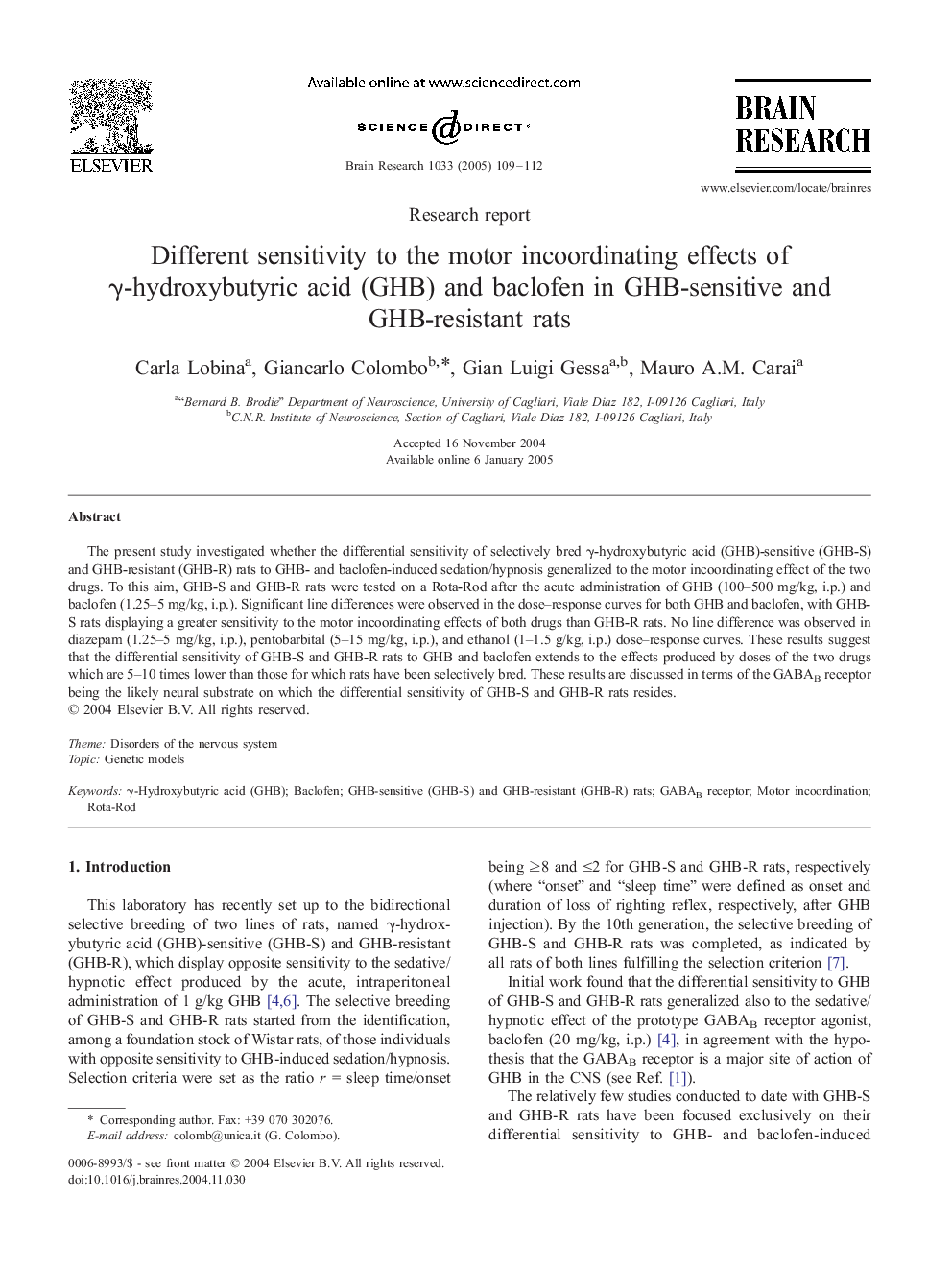| Article ID | Journal | Published Year | Pages | File Type |
|---|---|---|---|---|
| 9416761 | Brain Research | 2005 | 4 Pages |
Abstract
The present study investigated whether the differential sensitivity of selectively bred γ-hydroxybutyric acid (GHB)-sensitive (GHB-S) and GHB-resistant (GHB-R) rats to GHB- and baclofen-induced sedation/hypnosis generalized to the motor incoordinating effect of the two drugs. To this aim, GHB-S and GHB-R rats were tested on a Rota-Rod after the acute administration of GHB (100-500 mg/kg, i.p.) and baclofen (1.25-5 mg/kg, i.p.). Significant line differences were observed in the dose-response curves for both GHB and baclofen, with GHB-S rats displaying a greater sensitivity to the motor incoordinating effects of both drugs than GHB-R rats. No line difference was observed in diazepam (1.25-5 mg/kg, i.p.), pentobarbital (5-15 mg/kg, i.p.), and ethanol (1-1.5 g/kg, i.p.) dose-response curves. These results suggest that the differential sensitivity of GHB-S and GHB-R rats to GHB and baclofen extends to the effects produced by doses of the two drugs which are 5-10 times lower than those for which rats have been selectively bred. These results are discussed in terms of the GABAB receptor being the likely neural substrate on which the differential sensitivity of GHB-S and GHB-R rats resides.
Keywords
Related Topics
Life Sciences
Neuroscience
Neuroscience (General)
Authors
Carla Lobina, Giancarlo Colombo, Gian Luigi Gessa, Mauro A.M. Carai,
